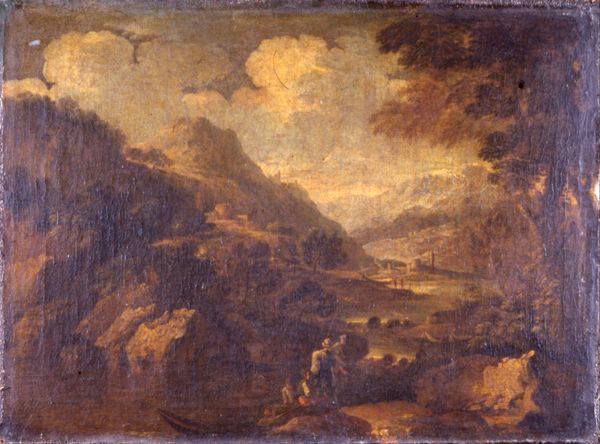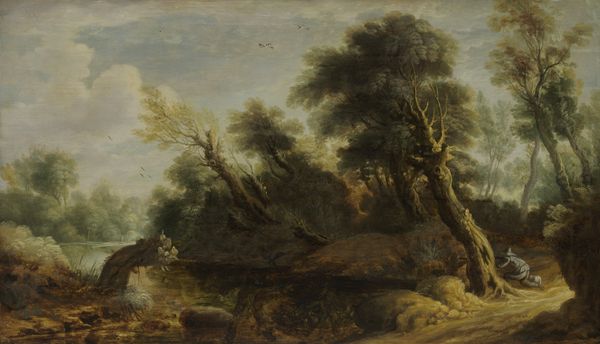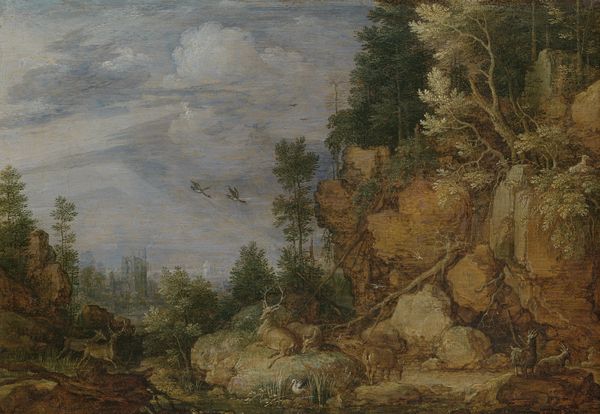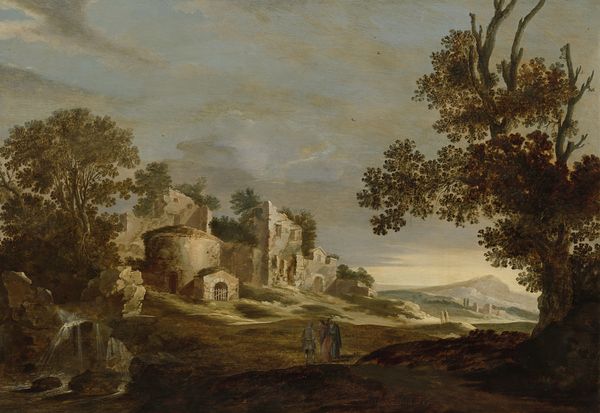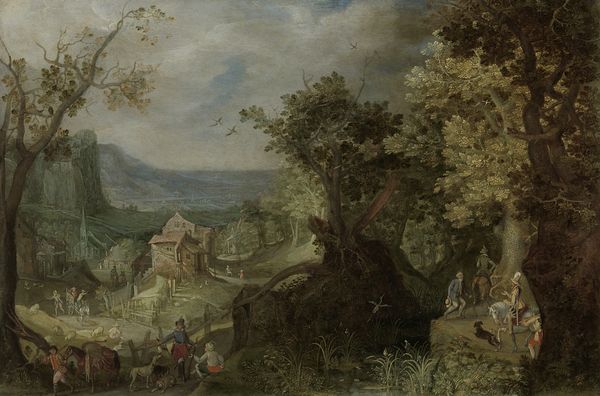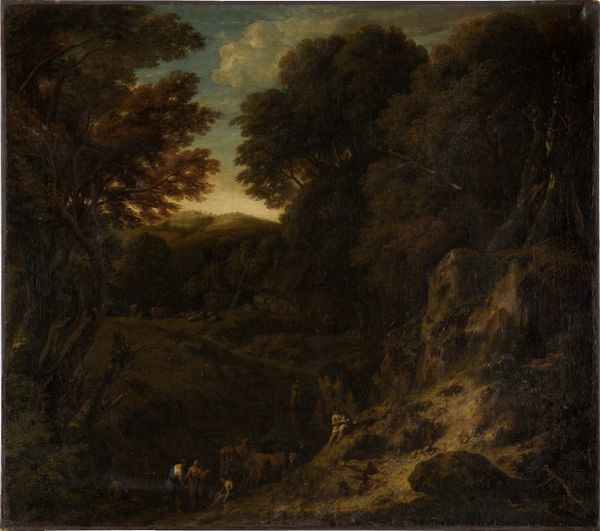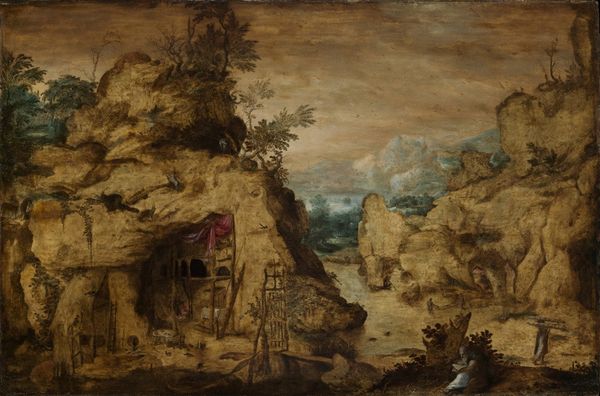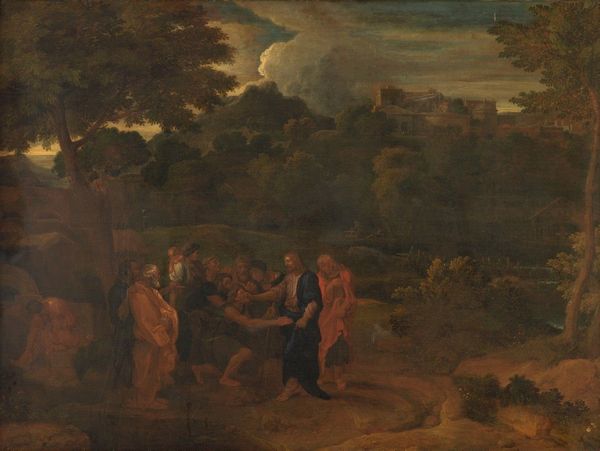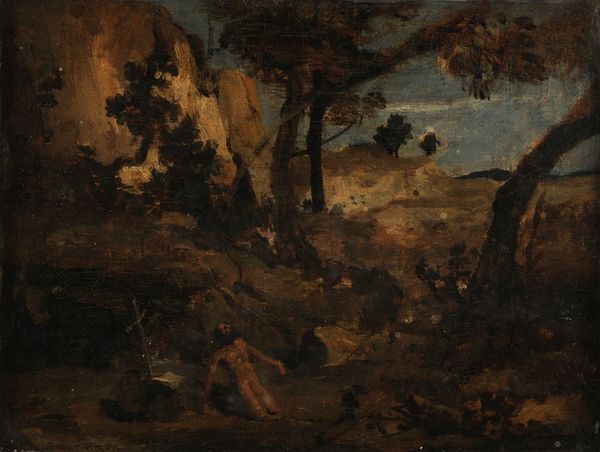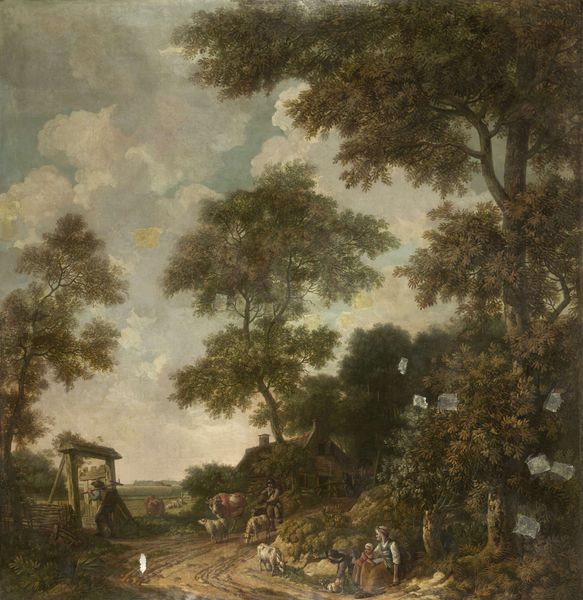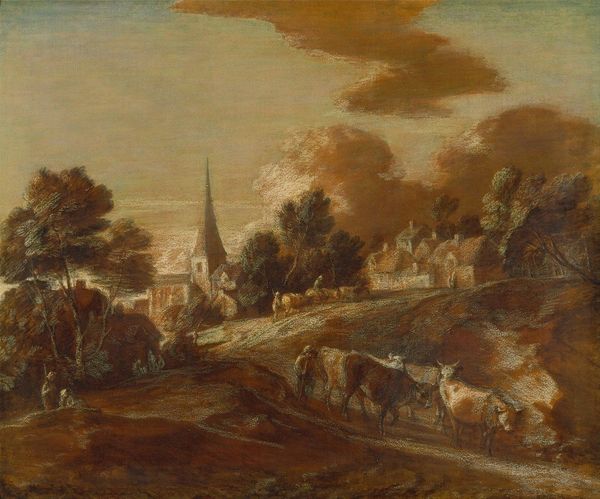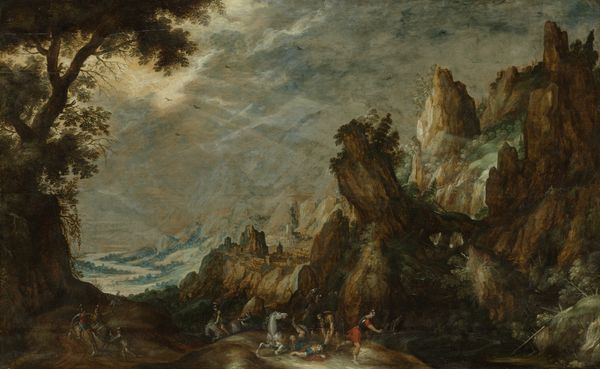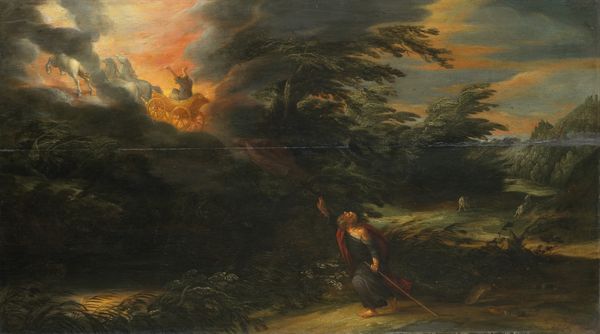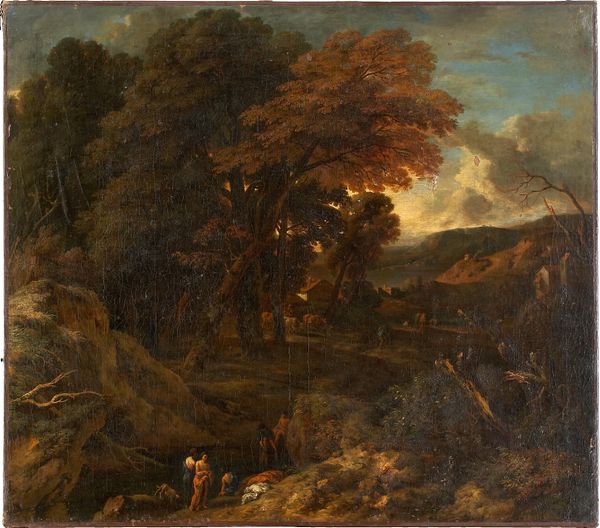
Dimensions: 79 cm (height) x 100 cm (width) (Netto)
Editor: Here we have an 18th-century oil on canvas piece, “Landskab med bibelsk staffage,” attributed to van de Laeter. I’m struck by how the artist uses light to almost create a theatrical stage for the biblical figures within this vast landscape. What’s your read on the historical and cultural context? Curator: Well, that "stage" you mention is precisely where the power dynamics begin. This painting is an assertion of power through land ownership and divine right. How does the inclusion of biblical figures legitimize landscape? Does it act as a divine blessing upon a particular place? Editor: I suppose it connects the earthly realm to a higher spiritual order, thereby justifying human presence and control over the land? Curator: Exactly! Consider the institutions that would have commissioned or consumed such works. Wealthy landowners, the church – they are reinforcing their authority, embedding it into the visual culture of the time. It’s not just pretty scenery; it's a political statement. Editor: That makes me see it in a different light! It's not just a pretty picture; it's an assertion of dominance. Curator: And remember, art never exists in a vacuum. What other forms of power and representation might have been circulating alongside these landscape paintings? What role do you think landscape played in forming national identities during this era? Editor: I hadn't considered the interplay between landscape and power dynamics before. Now I see how it reflects the social hierarchies of the time, not just visual delight. Thanks! Curator: And thank you. Thinking about it that way gives us a clearer vision on its place in society.
Comments
No comments
Be the first to comment and join the conversation on the ultimate creative platform.
